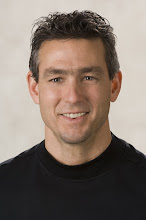Proposed to be among "... the most influential works of psychiatric literature since Freud..." Viktor Frankl makes the case the case in Man's Search for Meaning that a significant part of life's meaning is your suffering through it. Indeed, your purpose is to shoulder your life's unique burdens in a way that only you can.
Allegedly, this is why Catholics sacrifice during lent. And why world class cyclists refer, quite literally, to "suffering" during race and training events. I'm quite sure that psychiatry and psychology schools have long studied the bizarre relationship between meaning, suffering, and happiness. And will continue to do so.
But just how does this apply to exercise? What's the relationship between pain and progress with regards to health and fitness? Well, as we all know, exercise introduces pain in a number of different ways. Unfortunately, not all exercise pain is created equal, and tricky part is recognizing the difference between good pain and bad pain.
Joint problems, muscle strains and over training fatique are all bad pains. Suffering, to the degree that you become faint or dizzy during cardio is also bad pain. These are to be avoided as they only deepen injuries and will retard recovery.
Good pain, however, does have it's role. It is, in fact, needed to push the body to adapt. And despite however wrong he might have been in guiding the state of California to near bankruptsy (which, in his defense has been done by several previous CA govenors throughout history), Arnold appeared to be onto something when he coined the phrase "No Pain No Gain" back in the 70s.
Indeed, only after you are physically pushed to your limits does your body adjust to the stress by becoming stronger, leaner, or more fit aerobically. With weight training, we push clients to exhaustion (and beyond) on a certain (managed) set of exercises to fully recruit muscle tissue.
Muscle fibers, you see, are arranged in muscle fiber groups that are used to complete a physical movement. The problem is, muscle fiber groups behave in a way we call the "All or Nothing" principal: either all of the fibers within a group are working for you, or none of the fibers within the group are working for you.
To make matters worse, additional muscle fiber groups are recruited to assist with the movement only after the initially recruited groups have been exhausted. And that's why we push to exhaustion on a few sets ... suffering through the lactic acid pain that tells us to stop ... to simply get to a point where we can incorporate the additional muscle fiber groups.
When done within a managed program, this is the exact stress that is needed to adapt, and is one of the primary reasons why personal trainers exist at all: finding that fine line between good and bad pain.
So, no matter what the verdict is on Frankl, Schwarzenegger was right all along.
Friday, March 27, 2009
Subscribe to:
Post Comments (Atom)



No comments:
Post a Comment